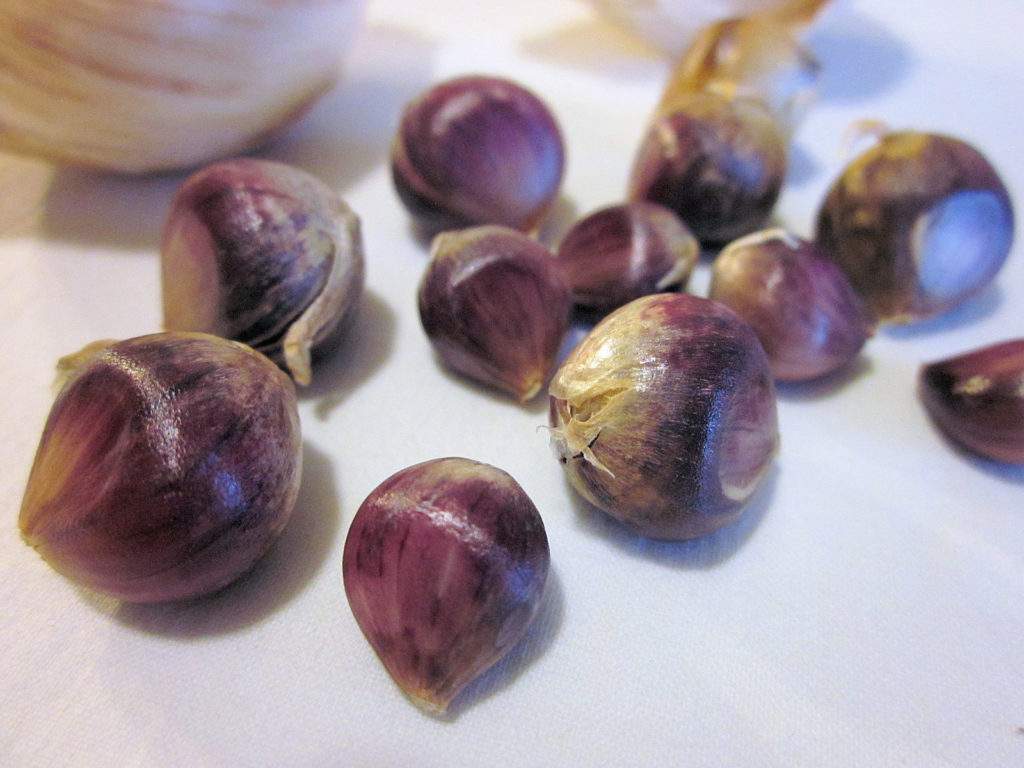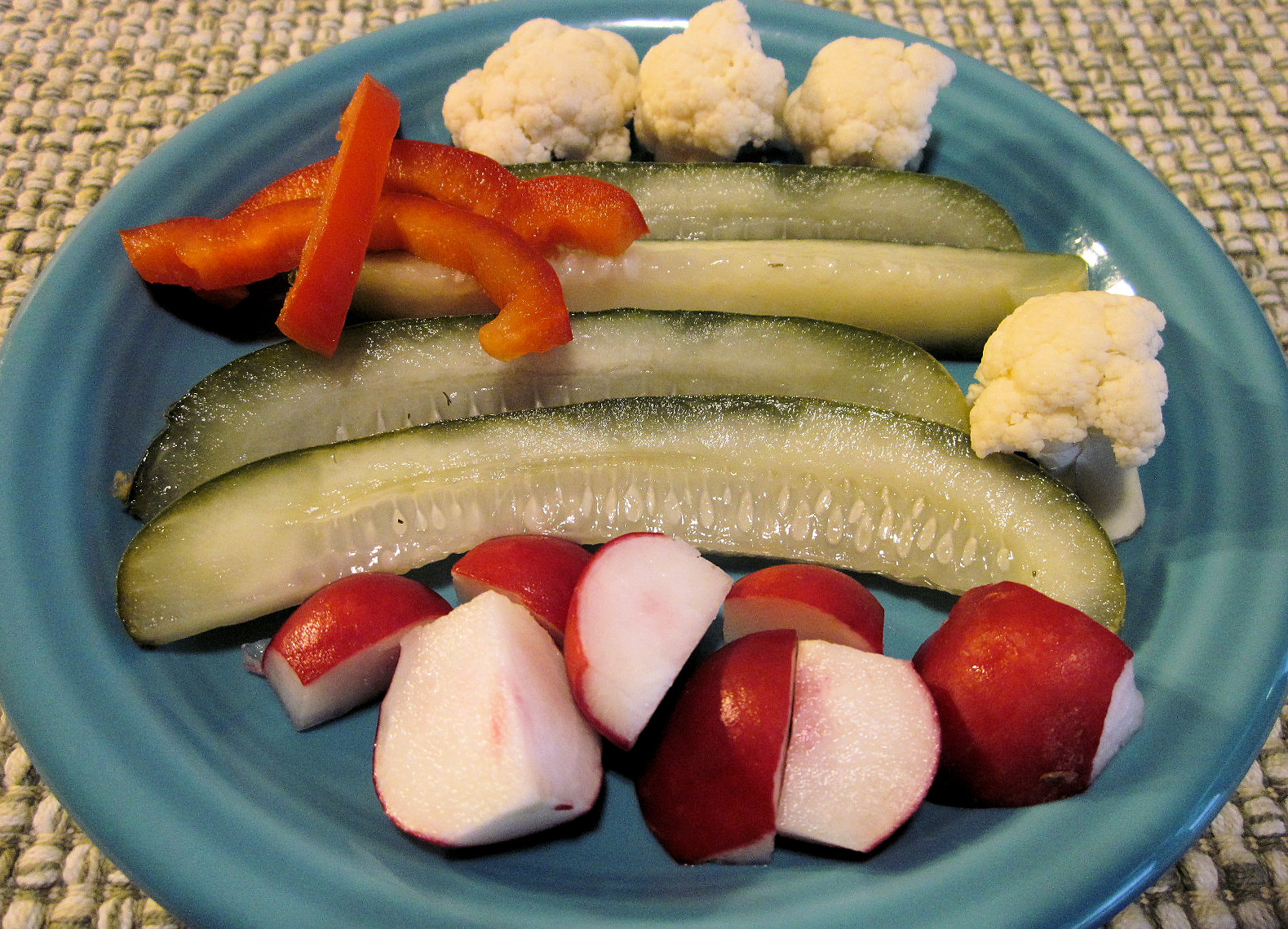Easy Gardening Project: Growing Garlic
Growing garlic isn’t difficult. I live in mid-Michigan in gardening zone 5B, where we plant garlic cloves in late fall, just around the time the first freezes hit. This way they can winter over, and we will see their green shoots come up in the spring. By late summer next year, they will be ready to harvest. The only care they will need during their life cycle is occasional watering in dry weather, and keeping the weeds at bay.
Want to know what your gardening zone is? Enter your zip code at Michigan Bulb’s Zone Finder. It’s good to know your zone when choosing plants for your yard.
Here’s pictures of some of this years haul. These are the cloves I’ve saved aside to return to the garden to become next year’s garlic plants. I chose these because they’re so huge. Every year, I re-plant the biggest of the cloves, and over the past couple of decades, I’ve developed a mighty garlic army!
What’s that you say? They don’t look so big in this bowl?
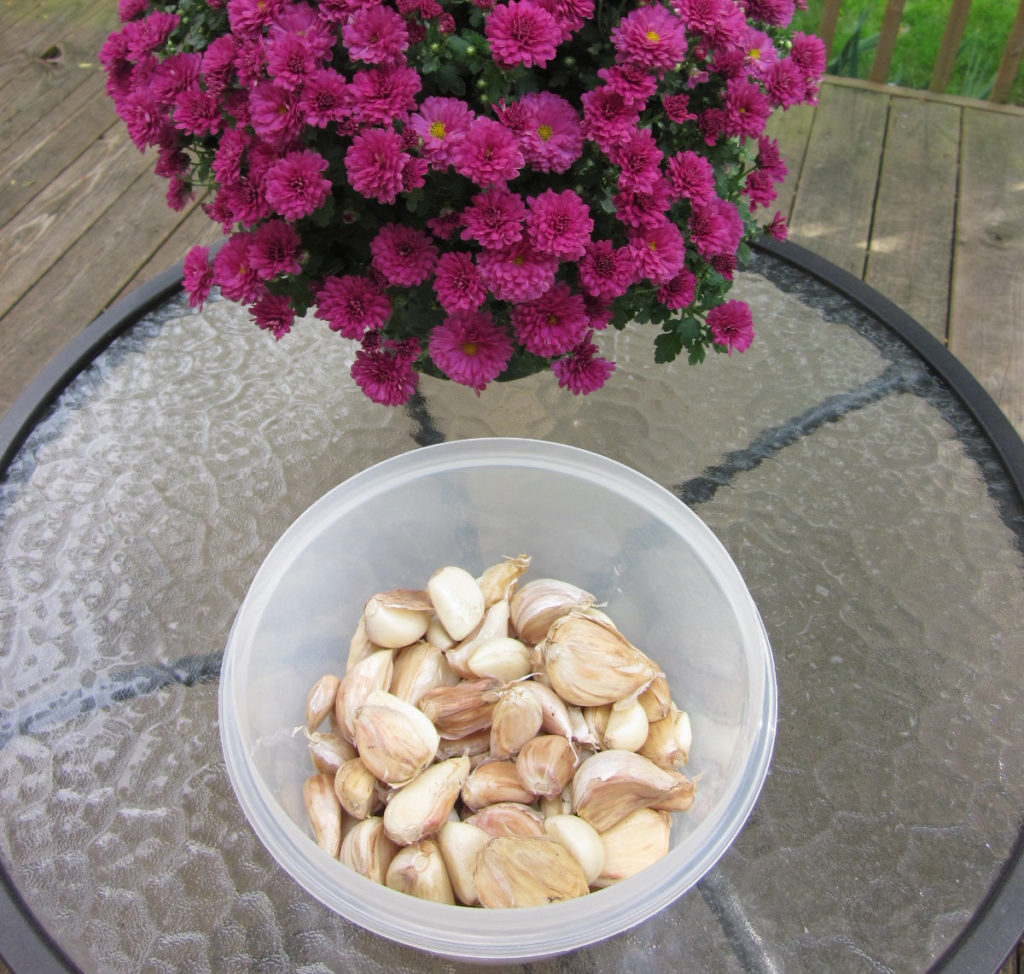
Well, let’s compare them to quarters for size reference. No, those aren’t dimes. They are quarters. Dwarfed by my garlic cloves.
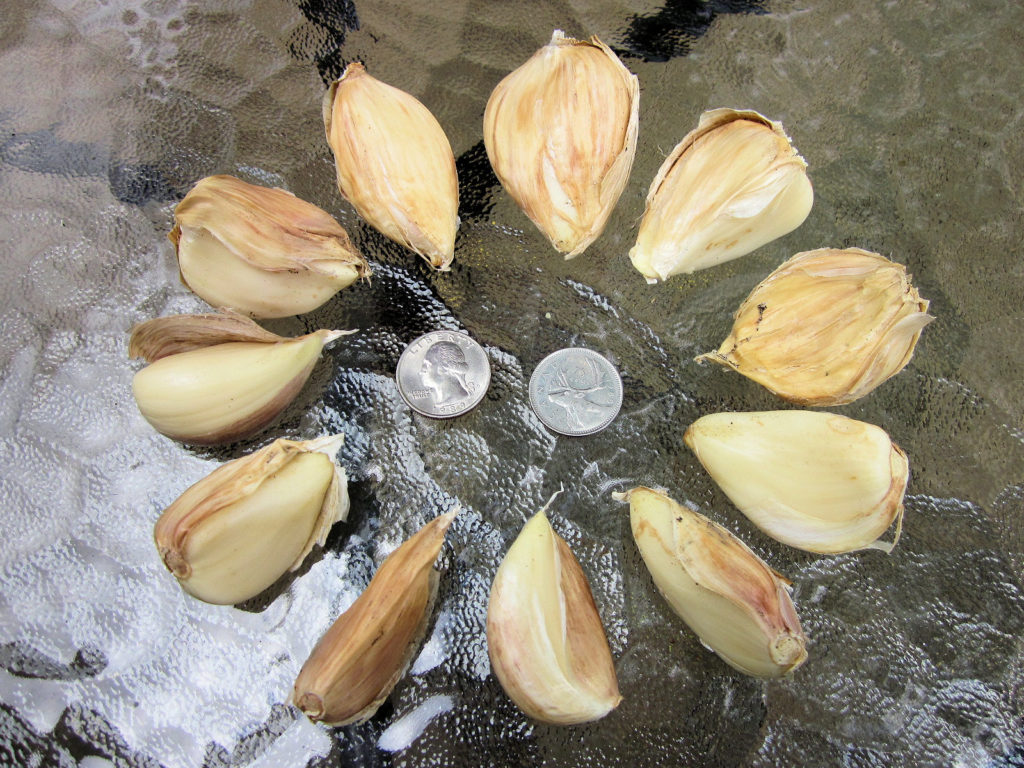
That is one huge garlic clove. George Washington looks nervous.
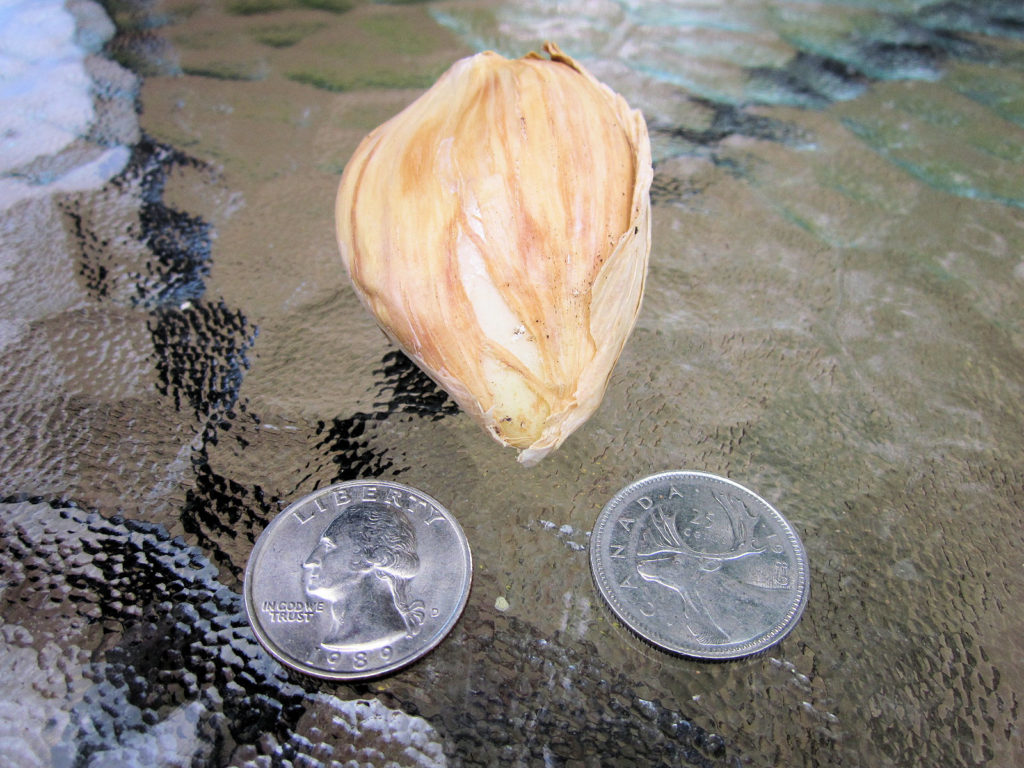
Below, you can see the pointy ends, and the one blunt end (second from right). That’s how you know which way to plant them. Poke holes three inches deep and four inches apart in weed-free soil. Push one clove down into each hole, pointy end up, blunt end down. Pat dirt over the hole to fill it, and go do something else until next summer. So easy.
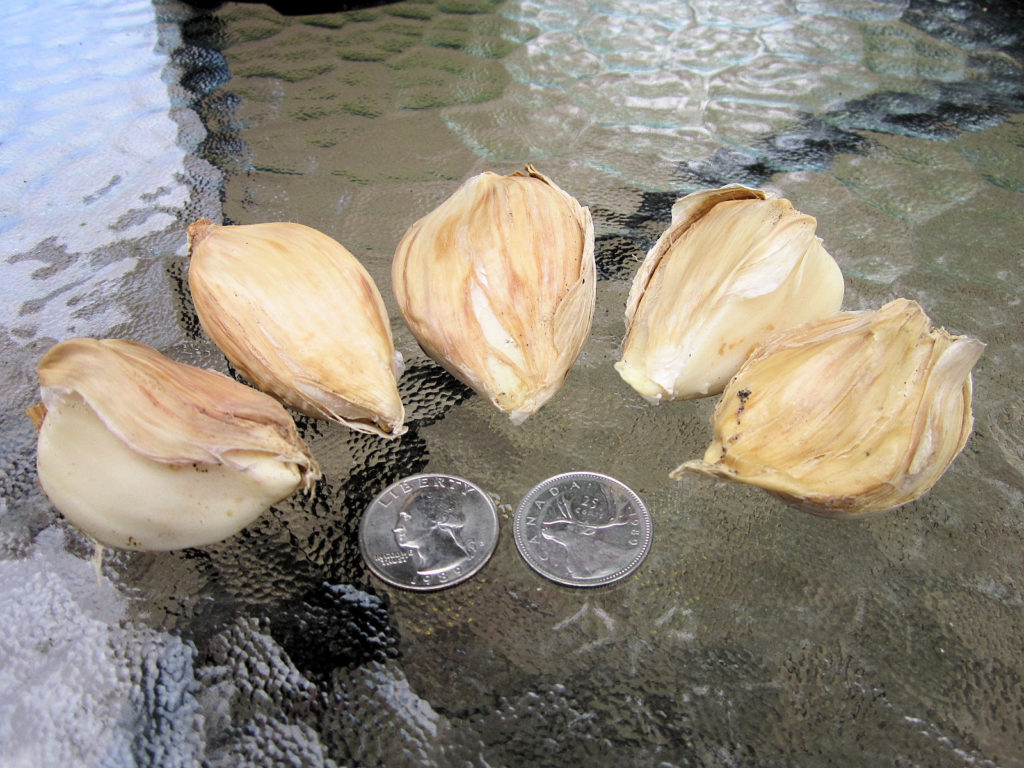
The garlic that isn’t getting re-planted has been dehydrated and crushed into small pieces. These are easy to store, and can be used in all sorts of soups, stews, sauces, and even things that don’t start with ‘S’. If you have a mighty blender or food processor, you could pulverize dehydrated garlic into powder.
Here’s some simple advice about drying garlic.
If you are growing a ‘hardneck’ variety of garlic, they will develop a ‘scape’, which is a long, center stalk that forms a loop before ending in a flower. These scapes are useful!
How to Cook with Garlic Scapes
If, like me, you choose not to use the scapes and flowers, you can leave them on the plant and let the flower go to seed. I know that scapes draw nutrients away from the forming garlic heads below ground, but in my experience, not by much. Your mileage may vary. After a few years, you’ll know what you want to do about the scapes.
The scape flower seeds, or as we call them at my house, ‘pearls’, will eventually burst free from inside the flower casing and dry in place on the stem. You can save these pearls to plant, if you wish to increase the size of your own personal garlic army. I’ve done this many times. The underground garlic heads will be smaller than those grown from cloves, but they are still perfectly usable and just as delicious.
